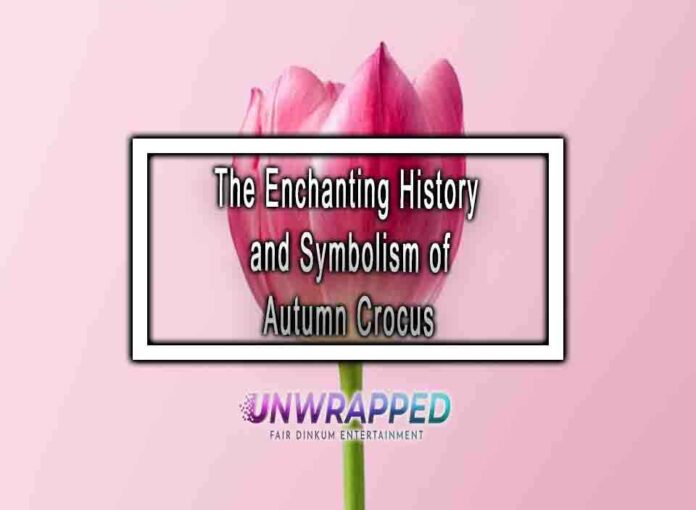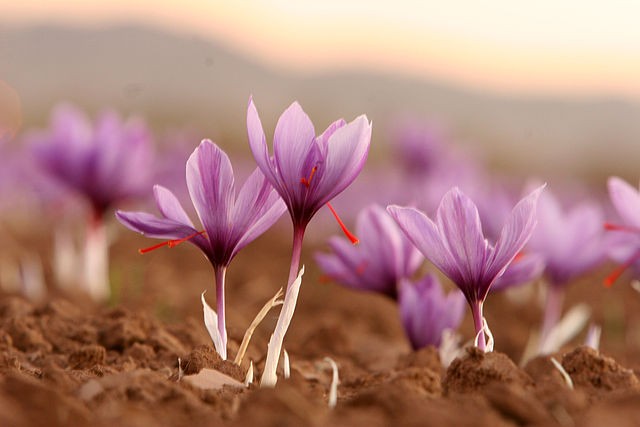Autumn Crocus, scientifically known as Colchicum autumnale, is a captivating flowering plant that has a rich history and carries symbolic meanings. Here’s a glimpse into the enchanting history and symbolism of Autumn Crocus:
1. Historical Significance:
- Ancient Roots: The Autumn Crocus has a long history, dating back to ancient times. It was known to the Greeks and Romans, who used it for medicinal purposes.
- Medicinal Uses: Colchicine, a substance derived from Autumn Crocus, has been used in traditional medicine to treat various ailments. However, it is highly toxic and should be used with extreme caution.

2. Symbolism of Autumn Crocus:
- Death and Rebirth: In some cultures, the Autumn Crocus is associated with themes of death and rebirth. The plant’s ability to seemingly emerge from the ground without warning after the leaves have fallen adds to its symbolism of renewal.
- Resilience: The Autumn Crocus blooms at a time when most other flowers have faded, symbolizing resilience and strength during challenging times.
3. Botanical Features:
- Late Bloomer: True to its name, the Autumn Crocus blooms in the fall, typically between September and October. This late blooming period sets it apart from the spring-blooming crocuses.
- Distinctive Appearance: The plant produces goblet-shaped flowers in shades of pink, purple, or white, with prominent stamens.
4. Culinary Uses and Toxicity:
- Toxicity Warning: While some plants in the Colchicum genus are toxic, they have been historically used in herbal medicine. However, caution is crucial due to their high toxicity.
- Meadow Saffron: Autumn Crocus is sometimes referred to as “Meadow Saffron,” but it’s important to distinguish it from the true saffron (Crocus sativus), which is a different plant used as a spice.
5. Garden Beauty:
- Ornamental Plant: Beyond its historical and symbolic significance, Autumn Crocus is grown for its ornamental value. The striking blooms add a burst of color to gardens during the autumn season.
- Adaptability: The plant is adaptable to various soil types but prefers well-draining soil. It’s also suitable for naturalizing in meadows and woodland settings.
6. Literary and Poetic References:
- Poetry and Literature: The beauty and unique blooming time of the Autumn Crocus have inspired poets and writers, who often use the plant as a symbol in literature.
7. Cultural Beliefs:
- Folklore and Beliefs: In some cultures, the Autumn Crocus may be associated with specific beliefs or superstitions. It’s essential to consider the cultural context when exploring its significance.
8. Gardening Practices:
- Planting Depth: Autumn Crocus corms should be planted at a depth of about 4-6 inches in the soil.
- Sunlight: They prefer partial shade to full sun, making them versatile additions to different garden settings.
While the Autumn Crocus is undeniably enchanting and carries historical significance, it’s crucial to approach it with caution due to its toxicity. As with any plant, it’s important to appreciate its beauty while being aware of its potential risks and respecting its cultural and historical context.











